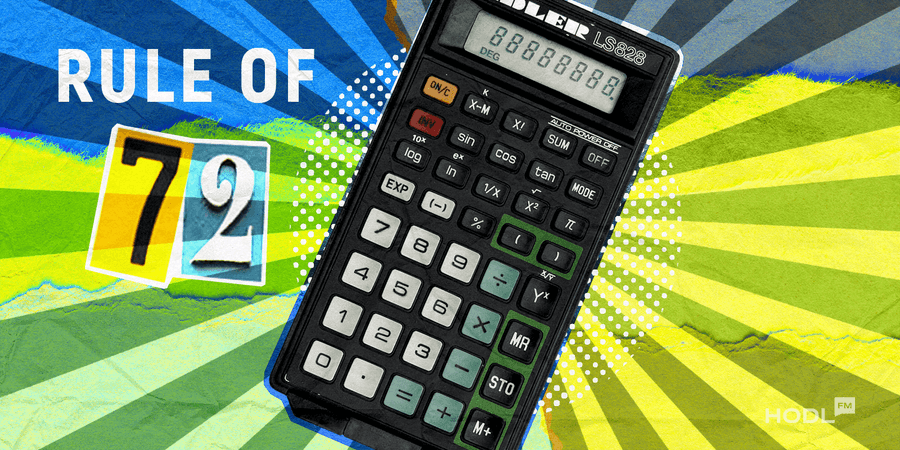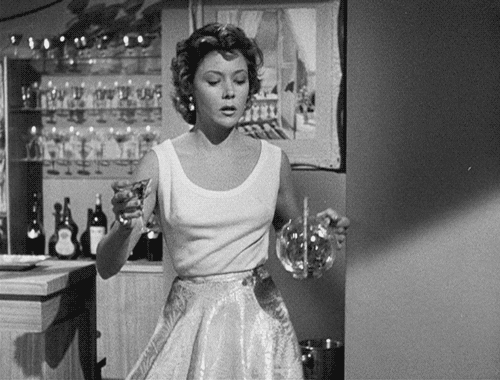In the 15th century, a simple yet charming companion known as the Rule of 72 came to be. This guide is dedicated to everyone whose investment story started with “When will I get my returns back?”
An X user said you can’t be handsome and know math. At HODL, you can know the Rule of 72 and use it to double your investments. Aaaand stay handsome!
The Rule of 72 is a formula for determining when an investment will double. For example:
A $2 investment will take 9 years to grow to $4 using an 8% annual interest rate. We arrived at $4 after dividing 72 by 8 (72 ÷ 8).
Why Do You Need the Rule of 72?
In investments, the only constant is unpredictability. With the Rule of 72, you can easily tell the doubling time of an investment.
Financial planners, business owners, investors, and actuarial analysts figure out the return on Investments (ROI) using various strategies. The rule is suitable for estimating inflation’s impact on investments, the annual rate of return, the potential for growth, retirement funds, and savings.

Investors can project their investments’ ROI using a plethora of avenues. For example, there is another formula for determining when an investment will triple (the rule of 114).
The Rule of 72 and other such formulas are convenient methods for investors to plan long-term financial goals. In addition, the rule comes as a handy education tool for illustrating compound interest and the potential of different interest rates.
Related: Centralized Exchanges: The DeFi Gateways We Never Knew We Needed
How the Rule of 72 Works in Traditional Finance
Rules of financial estimation are classical charmers in the ballroom of finance. As such, there are multiple facets to apply the Rule of 72 in traditional finance. Some of these include the calculation of stock market returns, savings accounts, and fixed-income investments.
In recent years, interest rates have gone up thereby attracting more investors to fixed-income assets. The Rule of 72 has gone on to become an applicable tool for these investors. To understand how these individuals are using the Rule of 72, check out the following examples:
- A Certificate of Deposit (CD) doubling in 12 years using an annual interest rate of 6%.
- A United States Treasury Bond doubling in 13 years, and 7 months using an annual interest rate of 5.3%.
- A Savings Account doubling in 16 years using a 4.5% annual interest rate.
One limitation of the Rule of 72 in traditional finance is the inability to consider changes in interest rates. For example, there is no guarantee that an investment opportunity will enjoy a 6% interest every year.
Factors like inflation rates, market dynamics and economic perfomance might lead to varying yearly rates of return. Nevertheless, the Rule of 72 is still a great tool for making broad estimates about future returns on investment opportunities.
The Rule of 72 in Cryptocurrency Investing: An Exploration
In the wildly volatile crypto space, numbers can really dance. One minute you are a millionaire with Bitcoin at $45K, next minute you are watching ‘Slumdog Millionaire’ to gain inspiration on how to regain your rich guy status.
Someone compared the Rule of 72 in crypto with trying to catch a unicorn. Let’s find out whether that’s true. Isn’t it true back in 2010, believing BTC would reach $69K was sort of believing a unicorn exists? Why not believe both?
Cryptocurrencies can undergo rapid price changes with factors like technical upgrades, regulatory news, institutional investments, market sentiments, and influencer coverage.
Alternatives to the Rule of 72
Bitcoin soared from $1K to $20K in 2017, and fell to around $3.5K in 2018 before rising to $69K in 2021 before falling to as low as $15K. Such price swings are hardly predictable without adjusting the Rule of 72 to accommodate investment opportunities that have extremely high rates of returns.
For instance, we need to mention that the Rule of 72 is most accurate for investment opportunities with 5 -10 percent. As such, the accuracy slackens off as the rates go lower or rise higher outside the range. For such interest rates, forecasters recommend one thing._Modifying 72 by adding or subtracting 1 for each 3-point deviation from the most accurate rate of return, 8%.
Furthermore, one has to consider that varying the rule might have certain outcomes. These include using 78 instead of 72 highly favors investments with approximately 7.2% rates of return. Using 69.3 favors investments with continuous compounding rates. Finally, 69 is best for rates of returns near 9.9%. These are important considerations given that adjusting the rule might get to any of the mentioned figures.
Limitations of using the Rule of 72 in Crypto
Cryptocurrencies do not follow the same investment growth patterns as traditional finance assets. Therefore this makes the Rule of 72 less reliable when estimating the doubling time for a crypto investment. The Rule has existed since the 15th century and has consistently provided nearly true estimates for traditional finance. Luca Pacioli, the mathematician who invented the rule also did not provide a concrete explanation for the derivation. As such, crypto investments which are relatively new have not been able to function according to the rule’s projections.
The unpredictable nature of cryptocurrency prices has often led investors to diversify their crypto portfolios. One key reason for doing this is to safeguard their investment by spreading the risks. If 3 of 5 crypto assets in their portfolio will 1000X in 10 years, the returns will make up for the few losses made in the remaining 2. HODL recommends investors also seek financial advice and always remain updated with crypto market trends.
A solid degen conducts solid risk evaluation but a solid HODLER diversifies their bag. Read the benefits of diversifying and managing risk in crypto investments below.
Benefits of Diversifying and Managing Risks in Crypto Investments
Some experts recommend the 80/20 rule when investing in crypto investing. The rule applies that 20% of investment should go to low/mid-cap coins, while 80% goes for large-cap coins like those on the ‘top 20 cryptocurrencies by market cap’ list. By doing so, investors reduce risk but continue taking their chances with low coins that have MOON potential.
Investing in one or a few coins increases your chances of overexposure. This means you can now balance your risks and minimize vulnerability to adverse market conditions.
Diversifying also contributes to long-term stability for a HODLER’s portfolio. A well-diversified portfolio is well-suited to prevail in different market conditions and still generate consistent returns.
Alternative Analytical Approaches in Cryptocurrency Investing
Apart from modifying the Rule of 72 when estimating crypto returns, investors have a dozen alternative approaches for forecasting crypto investments.
- Technical Analysis. One of the methods for forecasting crypto is technical analysis. The use of past perfomance to predict future movements. The most popular tool for conducting crypto technical analysis is TradingView. On TradingView, users can implement various indicators, trendlines, and moving averages to make informed crypto investment decisions.
- Fundamental Analysis. Crypto investors also use fundamental analysis when estimating future price movements. Fundamental analysis involves conducting an assessment of the technology, team, partnerships, use cases, and community behind a crypto project. These factors are important considerations for calculating the true value of a cryptocurrency project.
- Sentiment Analysis. Sentiment analysis also helps cryptocurrency investors to gauge the market mood. This is possible by evaluating the different opinions of market participants. Social media platforms, news releases, and digital forums are suitable places to gauge market sentiment.
- Onchain Analysis. There is also on-chain analysis which allows crypto investors to forecast price movements using blockchain data. On-chain analysis involves studying transaction volumes, blockchain activity, wallet activity, exchange transactions, and user activity to understand the strength of a cryptocurrency.
- Scenario Analysis. Scenario analysis is also another suitable method for predicting crypto price perfomance. A scenario analysis involves evaluating how a cryptocurrency asset would perform in different scenarios.
Conclusion
In the grand finale, the Rule of 72 takes a bow. It’s been a delightful journey, from traditional tango to crypto salsa. Remember, this is an educational guide, not a crystal ball. Hence, remember to consult with a financial advisor for professional advice before making financial decisions. The Rule of 72 is a trusty sidekick, but the crypto dance floor is as turbulent as a cat that doesn’t know whether to play in the rain or go in.
More on Edu Crypto:
- Cryptocurrency 101: A Beginner’s Guide to Understanding Cryptocurrencies, and Their Advantages
- 3 Clever Crypto Airdrop Scams to Beware
- Long and Short Positions in Crypto
So, whether you’re waltzing in the traditional ballroom or doing the cha-cha in the crypto club, may your investments dance to a harmonious financial rhythm by sticking to keen due diligence. Also, always keep a touch of risk management in your HODL pocket – it’s the secret sauce that makes the numbers waltz and the investments tango!
Disclaimer: All materials on this site are for informational purposes only. None of the material should be interpreted as investment advice. Please note that despite the nature of much of the material created and hosted on this website, HODL FM is not a financial reference resource and the opinions of authors and other contributors are their own and should not be taken as financial advice. If you require advice of this sort, HODL FM strongly recommends contacting a qualified industry professional.








